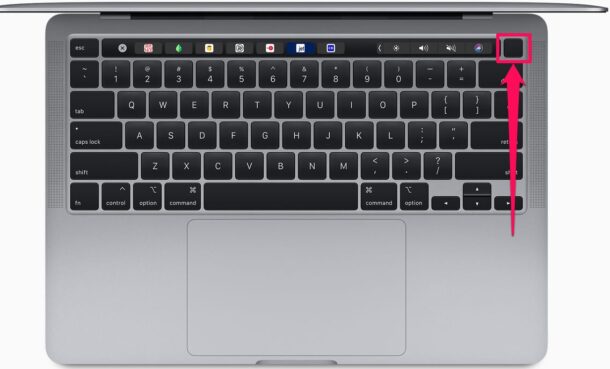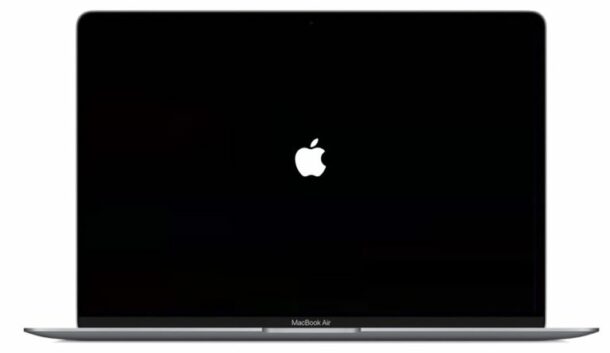How to Force Restart M1/M2/M3 Mac
![]()
Wondering how to perform some common troubleshooting tasks like force restarting an Apple Silicon M1, M2, or M3 Mac? If you are an early adopter an Apple silicon MacBook Pro, MacBook Air, or Mac mini, you might be curious how some some tasks are different, since M1-powered Macs are based on a completely different chip architecture.
The good news is that the new Apple M-powered Macs follow the same technique to force restart or hard reboot the device as the more recent outgoing Intel models. However, not everyone who got themselves a new M1 Mac is an existing macOS user coming from those more modern Intel Macs, so whether you’re coming from an older Mac or from the PC world with Windows or Linux, we’re going to demonstrate how you can successfully force restart your M1 powered macOS machine.
How to Force Restart M1, M2, M3 MacBook Pro
Here, we’ll be covering the force restart method for all the new Apple silicon Macs, starting with the 13-inch MacBook Pro, 14-inch MacBook Pro, and 16-inch MacBook Pro:
- Whether your screen is frozen or just turned on, simply press and hold the Touch ID button located to the right of the Touch Bar until the screen turns black. This button is also the power button of your Mac.

- Wait for a few seconds and then once again press and hold the Touch ID or power button until you see the Apple logo on the screen.

You can let go of your finger once the Apple logo shows up, as it indicates that the system is successfully booting up.
How to Force Restart MacBook Air with M1, M2, or M3 Apple Silicon Chip
Next, we’ll be taking a look at the procedure for the new MacBook Air model. The procedure for the 13″ Air and 15″ Air is identical to the MacBook Pro:
- No matter what the state of your screen is, as long as it’s powered on, press and hold the Touch ID / power button located at the top-right corner of the keyboard. Continue pressing that button until the screen goes black.

- Next, wait for a couple of seconds and long-press the Touch ID / power button until you see the Apple logo on the screen.

As you can see, the steps are pretty much the same. Once the Apple logo shows up, let go of your finger and you’re good to go.
How to Force Restart Mac Mini M1, M2, or M3 with Apple Silicon
Now that we’ve covered the MacBooks, let’s take a look at the necessary steps to force restart the new Mac mini, which is a bit different:
- Mac Mini’s dedicated power button is located on the rear side next to the power input as indicated in the image below. Press and hold this button until the screen goes black.

- Next, give it a few seconds and then long-press the power button until you see the Apple logo on the display that’s connected to your Mac Mini.

The Mac mini will reboot and you’re good to go.
That’s all you need to do, regardless of what Apple Silicon Mac you have, you now have an idea of how exactly to force restart your machine.
A force restart can come in handy in situations where the machine completely freezes and stops responding, or when you’re facing crash loops and other odd behavior that needs direct interruption. Forced restarting a Mac can result in unsaved data being lost permanently, so it’s not something you want to use casually.
Don’t consider the forced restart as an easy way to power off and power on your Mac without shutting down, and only use it if the system is not responding to your inputs. If you need to perform a regular restart, you can do that from the Apple menu.
Alternatively, you can use the keyboard shortcut by pressing Control–Command–Power buttons to force your Mac to restart without being prompted to save any open or unsaved documents. If you’re using one of the Intel MacBooks without a Touch ID button, you can use this shortcut to force restart it too, or, you can long-press the power button at the top-right corner of the keyboard, similar to how forced restarting works on the Apple Silicon Mac laptops.
Some people may force restart their Macs for troubleshooting purposes. What’s somewhat unique to Apple Silicon Macs however is that some other common troubleshooting techniques like SMC reset and NVRAM reset are no longer necessary, as those are limited to Intel chips. Nonetheless if you’re reading this on an Intel Mac, you may also be interested in checking out how you can reset the SMC on Touch ID equipped MacBook Air and Pro (newer Intel models only) and Mac Mini and iMac using the power buttons. Similarly, if your Intel Mac is not functioning properly, resetting the PRAM may also be something that you would want to learn. Just remember, as mentioned a moment ago there is no SMC or NVRAM on the Apple Silicon M1, M2, or M3 chip, thus those machines do not need to reset those.
Were you able to force restart your new M1, M2, or M3 Mac? Did doing so fix the unresponsiveness or issue you were having? Share with us any tips, advice, suggestions, experiences, or relevant thoughts in the comments.






“The procedure is identical to the MacBook Pro, despite the Air not having a Touch Bar:
[…] press and hold the Touch ID / power button located at the top-left corner of the keyboard next to the Touch Bar.”
Top right corner. Next to the touch bar that isn’t there.
The MacBook Air with Apple Silicon does indeed have a Touch ID / power button, it is in the top right corner of the keyboard. The Touch Bar is on the MacBook Pro, and Touch ID / power is also in the top right corner of the keyboard. The button to press is identical regardless of the machine. Hope that clears up your confusion par!
Touch ID / power button located at the top-left corner
Don’t you mean top-right corner?
Like the articles and have used more than one.
Thanks for catching the typo Harold, it has been fixed.